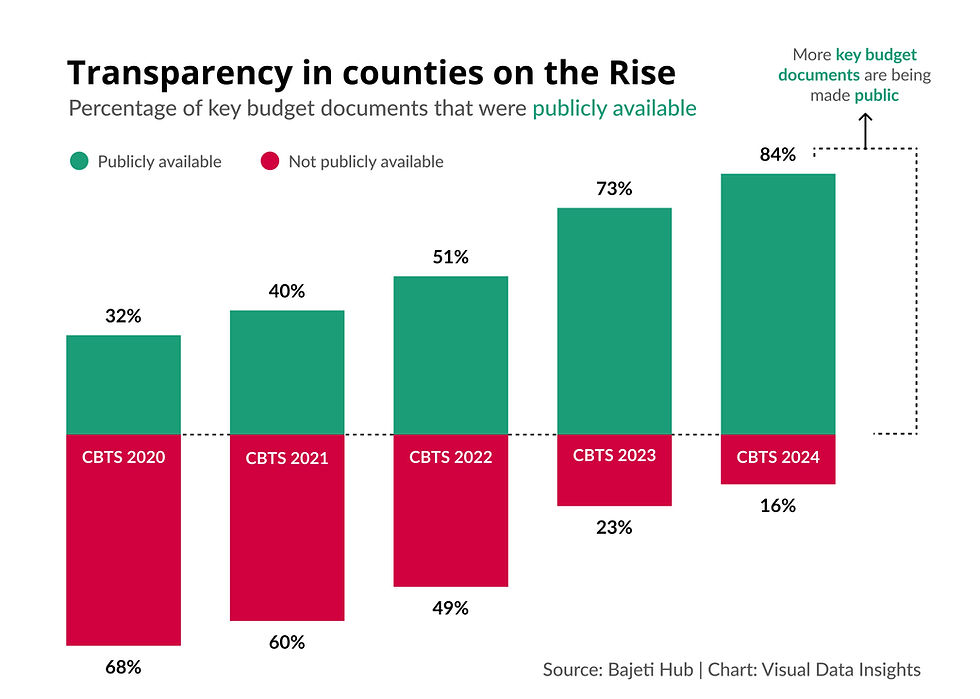Kenya’s Counties Are Finally Opening Their Budgets to the Public.
- Timothy Pesi
- Jun 3
- 2 min read
In a country where government opacity once seemed entrenched, something remarkable is happening: local administrations are finally letting the light in. Kenya’s County Budget Transparency Survey 2024 (CBTS), under the banner Open Budgets, Open Dialogue, by Bajeti Hub, reveals a dramatic leap in fiscal openness. Just four years ago, most counties failed to publish even half of their legally required budget documents. Today, that tide has turned. The share of key documents made public has soared from 32% in 2020 to 84% in 2024.
The Numbers Tell the Story
In practical terms, that means citizens can now access more than four out of five essential budget documents from their county governments—documents that inform everything from road construction and water access to education and health funding. More striking still, all 47 counties published at least one key document in 2024, compared to 2020, when four counties released nothing at all. Meanwhile, the number of counties that published all ten of the required documents has grown from just 1 to 24.
What’s Behind the Shift?
The push for transparency has been shaped by several forces. Civil society groups have steadily applied pressure, while the public's appetite for accountability has grown louder. Crucially, the National Treasury’s Bajeti Yetu portal, included in this year’s survey, has added a layer of national oversight and standardization. Counties are now expected to upload their documents to this official platform, raising the bar across the board.
The documents themselves aren’t mere red tape. They include the Annual Development Plan, County Fiscal Strategy Paper, Programme-Based Budget, Citizens Budget, and quarterly implementation reports. These are the blueprints of public service delivery, and their disclosure is a prerequisite for democratic participation.
Openness Is Not Enough
But while publication is a major win, true transparency demands more than uploading PDFs. Many documents remain mired in jargon and complexity. Citizens may be able to access them, but understanding them is another matter.
The next frontier in Kenya’s transparency journey is usability. Simplified summaries, visual tools, and interactive data formats—like those envisioned by the Bajeti Yetu portal—are needed to transform information into insight.
The Road Ahead
Kenya’s counties have made impressive strides in budget transparency. In 2020, this kind of progress would have seemed improbable. Today, it is a hard-won reality—and a credit to persistent advocacy, institutional pressure, and growing public expectation. Still, the story is far from over. A budget published is not yet a budget understood, and a document disclosed is not yet a dialogue begun.
Transparency is only the beginning of accountability—but it’s a very good place to start.




Comments